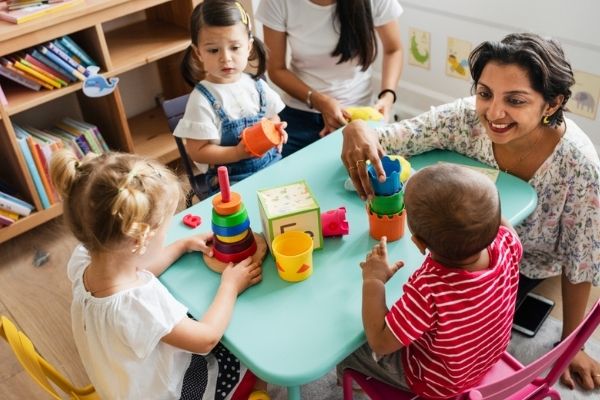Creating an Engaging Learning Environment for Children
Creating a vibrant learning environment in preschools involves more than just setting up classrooms. It’s about crafting a space where curiosity thrives and children feel inspired to learn. An engaging environment stimulates young minds and encourages exploration. Here’s how preschools can achieve this.
Design Interactive Spaces
Interactive spaces are crucial in preschools. Children learn best when they can touch, explore, and experiment. Design classrooms with various learning zones. Include areas for art, science, and reading. For instance, a cozy reading nook with colorful pillows invites children to delve into books. An art station stocked with different materials allows for creativity. These zones should be flexible and adaptable to accommodate various activities.
Integrate Technology Wisely
Incorporating technology can enhance learning if done thoughtfully. Use interactive whiteboards or tablets for educational games and activities. However, balance screen time with hands-on experiences. For example, after a digital activity, follow up with a physical project related to the topic. This combination helps reinforce learning and keeps children engaged.
Foster a Sense of Belonging
Creating a sense of belonging is fundamental in preschools. Children should feel valued and included. Decorate classrooms with students’ artwork and photographs. This personal touch helps them feel connected to their environment. Also, celebrate diverse cultures and backgrounds. Include materials and books that reflect various cultures to promote inclusivity.
Encourage Social Interaction
Preschools should encourage social interaction among children. Group activities and collaborative projects foster teamwork and communication skills. Arrange the classroom layout to facilitate group work. For instance, use round tables instead of rows of desks. This arrangement promotes discussions and group learning. Role-playing games and group storytelling also help children develop social skills and build friendships.
Provide Hands-On Learning Opportunities

Hands-on learning is vital in early childhood education. Activities that involve building, experimenting, and creating help children understand concepts better. Set up sensory tables with materials like sand, water, or rice. These tables offer tactile experiences that support sensory development. Incorporate science experiments that children can conduct themselves, such as growing plants or mixing colors.
Implement Routine and Structure
A well-structured routine helps children feel secure and focused. Preschools should establish a consistent daily schedule. Include time for free play, structured activities, and rest. Predictable routines help children understand what to expect and reduce anxiety. For instance, start each day with a circle time where children discuss the day’s activities. This routine sets a positive tone for the day and prepares them for the activities ahead.
Create a Safe and Stimulating Atmosphere
Safety is paramount in preschools. Ensure that all materials and equipment are child-friendly and regularly checked for hazards. A stimulating atmosphere goes beyond safety. Use bright colors and engaging visuals to create a vibrant environment. Display educational posters, charts, and interactive elements on walls. This visual stimulation supports learning and keeps children interested.
Encourage Exploration and Curiosity
Curiosity drives learning. Encourage children to ask questions and explore their interests. Set up discovery stations with materials related to various topics. For example, a nature corner with plants, rocks, and magnifying glasses can spark interest in the natural world. Allow children to choose activities based on their interests, fostering a love for learning.
Creating an engaging learning environment in preschools requires thoughtful design and a commitment to fostering curiosity and inclusion. By focusing on interactive spaces, integrating technology wisely, and encouraging social interaction, preschools can create a setting where children thrive. With routine and structure, a safe atmosphere, and active family involvement, preschools can provide a dynamic and enriching experience that supports young children’s development and love for learning.

















